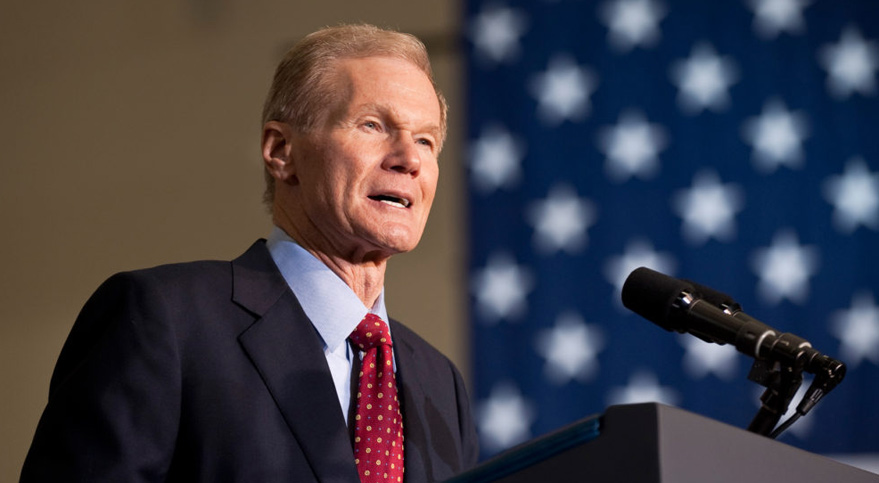
WASHINGTON – The U.S. Senate approved a compromise June 14 that would give United Launch Alliance access to as many as 18 Russian RD-180 rocket engines to compete its Atlas 5 workhorse against SpaceX’s Falcon rockets through 2022 for national security launch contracts.
After days of intense negotiations led by Sen. Bill Nelson (D-Fla.), the Senate reached an agreement on the issue as part of its debate on the National Defense Authorization Act for 2017. The Senate passed the annual defense authorization bill 85-13.
The compromise on the rocket engines all but ends a three-year debate that has at times divided the Senate’s authorizers and appropriators and pitted the Senate and House Armed Services Committees against each other. The House passed a competing version of the NDAA in May that also includes an 18-engine limit.
Congress first moved to ban the use of Russian engines for U.S. national security launches when it passed the 2015 National Defense Authorization Act in the wake of Russia’s annexation of Crimea.
Last year, the Senate appropriators used a must-pass spending bill to lift the ban, a move that infuriated Senate Armed Services Committee Chairman John McCain (R-Ariz.), who viewed the procedure as an end-run around defense authorization language that had already been approved by both houses of Congress.
In response, the Senate Armed Services Committee this spring moved to reinstate the ban, limiting ULA to nine RD-180s for upcoming competitions for DoD launches.
But other lawmakers feared that the nine-engine limit would stifle competition and inadvertently hand SpaceX a monopoly for national security launches.
In the weeks leading up the Senate’s June 14 vote on the NDAA, Nelson — a senior member of the Senate Armed Services Committee — worked both sides of the aisle to come up with a compromise: the Air Force could buy as many RD-180-powered launches as it sees fit through 2022, the date by which ULA expects to have Vulcan and its American-made engine ready to compete for Pentagon launches.
The Air Force, which gave SpaceX an $82.7 million launch contract in April after ULA sat out its first competition for Pentagon launch business, expects to seek bids for roughly 34 launches by the time the RD-180 ban would take effect on Dec. 31, 2022.
The Air Force’s next launch competition, which is expected to be for a GPS 3 mission like the one SpaceX just won, isn’t expected to result in a contract award until 2017.
Without the compromise like the one that just cleared the Senate, ULA would eventually find itself with no choice but to bid for Air Force launch contracts with its Delta 4 rocket, which is at least 35 percent more expensive than the Atlas 5 that ULA has already said can’t compete with SpaceX on price alone.
McCain, who has pushed for a 2019 deadline, ultimately went along with the 2022 end date for the Air Force to award new contracts for RD-180 powered launches. By the time the bill cleared the Senate, McCain could claim another concession: the Air Force can award no more than 18 of the upcoming launch competitions to ULA’s RD-180-powered Atlas 5.
In a statement, McCain said he supported the compromise because “it contains a legislative cutoff date for the use of Russian rocket engines” and because it “reflects the concern shared by authorizers and appropriators alike that year-to-year litigation of this issue did not serve the Congress, U.S. space policy, or our national security well.”
Sen. Richard Shelby (R-Ala.), whose push for ULA’s unrestricted use of the RD-180 pitted him against McCain, was also able to claim victory of sorts.
“While we can all agree that the U.S. should not be dependent upon any foreign power – especially in the national security arena – it would have been far too dangerous to hastily restrict the use of the RD-180 before an American-made rocket engine is developed,” Shelby said in a June 14 press release.
ULA spokeswoman Jessica Rye said in a June 14 statement that the RD-180 agreement reached by the Senate “ensures our country’s assured access to space, strengthens competition, protects taxpayers and keeps America’s launch industry healthy”
Now that both the House and Senate have approved their versions of the NDAA, a conference committee will meet to hash out the differences. While the House version also sets an 18-engine limit, it does not set an end date for the Air Force to award contracts for launches using those engines.
Related
ncG1vNJzZmiroJawprrEsKpnm5%2BifK%2Bxy6ymp2WjnbKxtMSrm6xlo5q7osDEZpqopaCnvK610p5kqKZdp7FufZdpZKKro6qycA%3D%3D